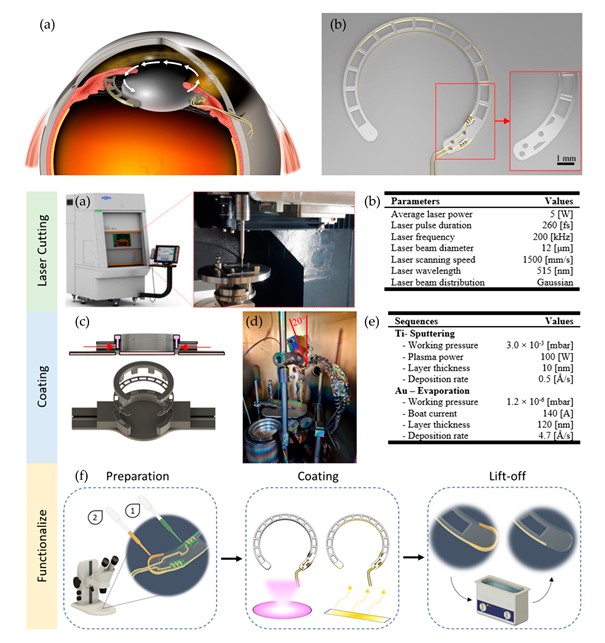Intraocular Ring Electrode Records Neuromuscular Signals of the Ciliary Muscle to Restore Accommodation in Presbyopia
Recording the eye’s intent to focus: This innovation could one day help millions regain near vision lost to aging.
A collaborative research team from the Institute for Microsystems Technology (iMST), Furtwangen University and the Institute for Ophthalmic Research, Centre for Ophthalmology, University of Tübingen has achieved a promising step toward restoring natural accommodation in aging eyes. In their latest publication in Biosensors, the team presents a flexible intraocular ring electrode designed to record biopotentials directly from the ciliary muscle – the muscle responsible for changing the shape of the crystalline eye lens to focus at different distances.
Inspired by the geometry of capsular tension rings already used to stabilize weakened, broken or missing zonules in cataract surgery, the novel electrode can be implanted into the eye and has demonstrated long-term stability in an artificial aging environment equivalent to over a year. Most notably, the electrode successfully recorded accommodation-related signals in a non-human primate, closely resembling those previously captured with contact lens electrodes in humans. The insertion of the electrode was carried out perfectly thanks to the surgical intervention from the Eye Clinic, Centre for Ophthalmology in Tübingen.
This breakthrough opens exciting possibilities for developing smart intraocular lenses that adapt in real time to the eye's needs, guided by its own neuromuscular signals. With further research, the system could offer a game-changing solution to presbyopia – the age-related loss of near vision that affects nearly everyone over 45.
The project was supported by the Carl Zeiss-Stiftung as part of the program “Breakthroughs at Universities 2020: Intelligent Solutions for an Aging Society”, the University of Tübingen, the Faculty of Medicine of the University of Tübingen, and the Centre for Ophthalmology at the University of Tübingen.
More Information: Maintaining sharp vision even in old age, AG Applied Vision Research




